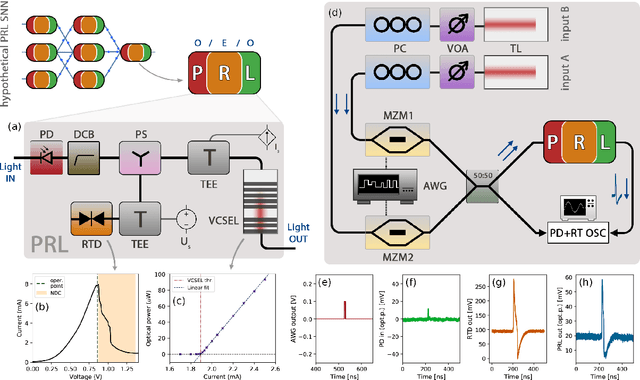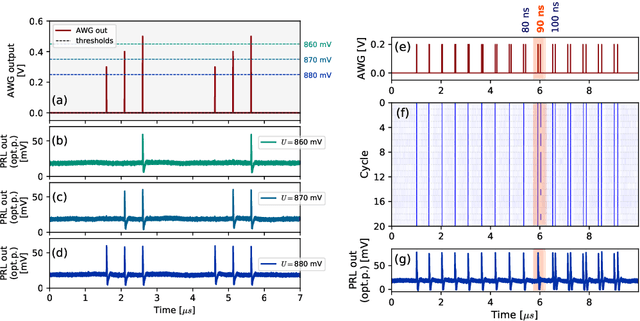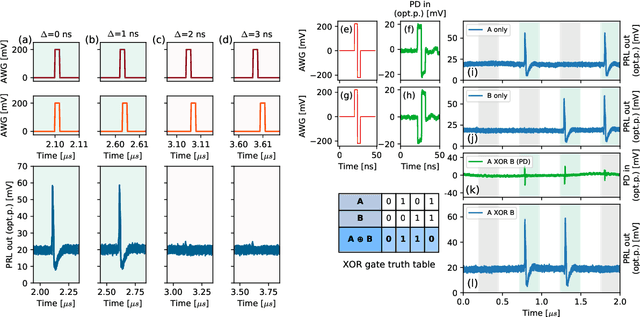Dafydd Owen-Newns
Interfacing spiking VCSEL-neurons with silicon photonics weight banks towards integrated neuromorphic photonic systems
May 01, 2023Abstract:Spiking neurons and neural networks constitute a fundamental building block for brain-inspired computing, which is posed to benefit significantly from photonic hardware implementations. In this work, we experimentally investigate an interconnected system based on an ultrafast spiking VCSEL-neuron and a silicon photonics (SiPh) integrated micro-ring resonator (MRR) weight bank, and demonstrate two different functional arrangements of these devices. First, we show that MRR weightbanks can be used in conjuction with the spiking VCSEL-neurons to perform amplitude weighting of sub-ns optical spiking signals. Second, we show that a continuous firing VCSEL-neuron can be directly modulated using a locking signal propagated through a single weighting micro-ring, and we utilize this functionality to perform optical spike firing rate-coding via thermal tuning of the micro-ring resonator. Given the significant track record of both integrated weight banks and photonic VCSEL-neurons, we believe these results demonstrate the viability of combining these two classes of devices for use in functional neuromorphic photonic systems.
Artificial optoelectronic spiking neuron based on a resonant tunnelling diode coupled to a vertical cavity surface emitting laser
Jun 22, 2022



Abstract:Excitable optoelectronic devices represent one of the key building blocks for implementation of artificial spiking neurons in neuromorphic (brain-inspired) photonic systems. This work introduces and experimentally investigates an opto-electro-optical (O/E/O) artificial neuron built with a resonant tunnelling diode (RTD) coupled to a photodetector as a receiver and a vertical cavity surface emitting laser as a the transmitter. We demonstrate a well defined excitability threshold, above which this neuron produces 100 ns optical spiking responses with characteristic neural-like refractory period. We utilise its fan-in capability to perform in-device coincidence detection (logical AND) and exclusive logical OR (XOR) tasks. These results provide first experimental validation of deterministic triggering and tasks in an RTD-based spiking optoelectronic neuron with both input and output optical (I/O) terminals. Furthermore, we also investigate in theory the prospects of the proposed system for its nanophotonic implementation with a monolithic design combining a nanoscale RTD element and a nanolaser; therefore demonstrating the potential of integrated RTD-based excitable nodes for low footprint, high-speed optoelectronic spiking neurons in future neuromorphic photonic hardware.
 Add to Chrome
Add to Chrome Add to Firefox
Add to Firefox Add to Edge
Add to Edge